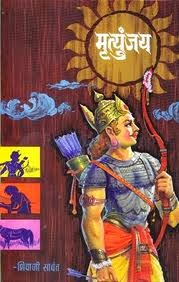Mumbai Untravelled: Banganga Tank
God with wives from across caste lines, a temple
aided by Muslims, a burial ground for Hindu ascetics and a fresh water tank
surrounded by the sea in Mumbai, sounds impossible? Welcome to Banganga, one of the oldest continuously inhabited neighbourhoods of Mumbai.
During the 30 minute ride
from Mumbai CST to Walkeshwar Depot, I kept wondering about the origin of
Malabar Hill. At the depot, I recounted an earlier conversation with a
conservation architect, who explained that the hills that mark the area, are
not known so because they have anything to do with the Malabar region of
Kerala. Devotees from the south of Konkan would visit the Banganga and in those
days, anyone coming from the south was known as a Malabari.
As I landed at the Walkeshwar Depot and looked
around, I was prepared to be surprised. The beginning of the walk at Banganga
led me to initially believe that it was a walk for the spiritually inclined.
While it does help if you lean towards history, mythology and spirituality, the
walk in itself is quite secular in composition. It transcends the boundaries of
religion as we know it. In one of the oldest continuously inhabited settlements
in Mumbai, it was surprising to find temples in an onion shape, reflecting
Islamic influences or finding some displaying Buddhist symbols while
negotiating through myths, some of which find common ground across religions.
 |
| The Khandoba Temple |
 |
| Goddess Shantadurga |
After a while, I admit the temple hopping made me restless.
I stopped over to ask, ‘Banganga kahaan hain?’ and the corner shopkeeper points
me towards a small side lane by telling me, ‘Down the stairs to your right.’ I
smiled and headed downstairs. Arriving here, I find myself greeted by tall
deepsthambhas, pillars that hold diyas. Looking around, I realised that the
Banganga is the place where one takes several steps back in time even as one
marvels at the paradox of traditional life co-existing with unplanned
modernisation.
The chiming of the bells and the mantra-chanting
pujaris and the occasional strains of Indian classical music, playing on radio
greet me to the tank where Lord Rama stopped over en route to Lanka. Lakshmana,
the brother of Sri Rama, is said to have shot an arrow into the ground, leading
to the formation of the natural spring of Banganga. The source of the spring is
largely believed to be a tributary of the River Ganga and the mossy green
waters of Banganga are said to be just as sacred as the Ganga itself and is
widely known for its healing powers.
 |
| The Banganga Tank |
Next up on the agenda was the most important and
oldest temple of the vicinity, the much reconstructed Walkeshwar Temple. On being
advised to worship Lord Shiva and finding no idol, Lord Rama proceeded to make
a linga with the sand available around him. This ‘Valuka Iswar’, which lends
the place its name of Walkeshwar, is derived from the word for an idol made of
sand.
Sitting on the staircase leading to the Banganga
Tank, I wondered about how mindless development has ruined the area of its
spiritual essence, which also marks the juxtaposition of Mumbai. My mind turned
to thinking of simpler times when deepasthambhas must have dotted the skyline
when temples did not look out of place in a concrete jungle. Despite all, the
Banganga stands silently as a testament narrating the city’s growth from
nothingness to being the financial capital to those who care to listen.


Comments